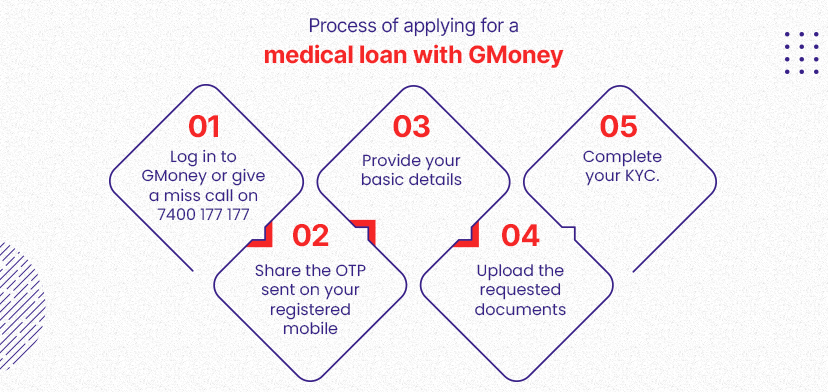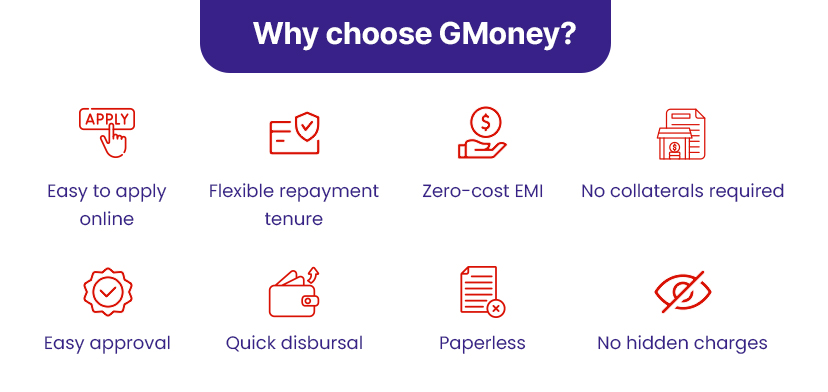Home » The Best Care for Diabetic Foot in Indore

Diabetes is a chronic disease affecting millions of people worldwide. It is a severe health issue, particularly for Indore residents. The syndrome can result in significant foot discomfort and the development of a diabetic foot ulcer.
Treatment for this ailment can be costly, making it difficult for many Indore residents to get the care they require. Fortunately, various medical professionals and organisations provide low-cost diabetic foot treatment in Indore. This blog post will go over diabetic foot diagnosis and treatment in Indore, including what to expect during an appointment, the cost of therapy, and available resources for diabetic foot pain management.
It is vital to get medical attention from the best diabetic foot surgeon in Indore as soon as you see a potential problem to diagnose and cure diabetic foot.
Diabetic foot consultations frequently include a physical examination and a discussion of the patient’s medical history and current way of life. X-rays may be taken to check for symptoms of sickness or injury, and the doctor may prescribe additional testing, such as nerve conduction studies or blood tests.
Depending on the diagnosis, the doctor may offer therapy and lifestyle changes to help alleviate symptoms and difficulties.
A. Medical interventions
Medications for Pain Relief and Infection Prevention
Adequate Wound Care
B. Surgical methods
Dead Tissue Debridement
In Serious Cases, Amputation
C. Lifestyle modifications
Right Foot Care
Physical Therapy and Physical Activity
The best diabetic foot care is decided by the severity of the condition and the individual’s general health. A multidisciplinary strategy involving a healthcare practitioner, a podiatrist, and a physical therapist yields the best outcomes.
In Indore, diabetic foot treatment may cost between Rs. 70,000 to Rs. 4,45,000. It varies according to the severity of the ailment and the treatment options chosen. Drugs and adequate wound care can assist diabetic foot patients in avoiding more serious complications and improving their results. Surgical procedures such as amputation may be required if the illness is severe enough.
Amputation is a costly treatment that might strain a family’s finances. However, in some cases, avoiding more serious consequences, such as gangrene, and increasing the quality of life for diabetic foot patients is required.
GMoney offers medical loans that are specifically designed to help individuals and families manage the costs of diabetic foot treatment and other healthcare needs. GMoney loan for diabetic foot treatment is tailored to each individual’s unique financial situation and can help cover the costs of diabetic foot medications, procedures, and other treatments. All with no-cost medical EMI and zero interest rates.
GMoney makes applying for a loan straightforward and can provide a quick decision, allowing treatment to begin as soon as feasible. Individuals and families can use GMoney to get the financial help they need to manage their diabetic foot care.

1) What is the significance of diabetic foot wound care?
Proper diabetic foot wound care is critical because it can help avoid infection and promote recovery. It entails cleansing the wound, dressing it with a sterile bandage, and checking for symptoms of infection on a regular basis.
2) What drugs are used to treat diabetic foot discomfort and prevent infection?
Antibiotics, pain relievers, and wound care dressings are examples of diabetic foot pain management and infection prevention drugs.
3) What exactly is diabetic foot care?
Foot care for diabetics includes checking the feet on a regular basis, keeping them clean and dry, wearing appropriately fitting shoes, and preventing injury. It is also critical to keep an eye out for any signs of infection or injury and to seek immediate medical assistance if necessary.
4) Can exercise and physical therapy assist diabetic foot management?
Yes, exercise and physical therapy can help diabetic foot management by improving circulation, lowering discomfort, and promoting overall foot health.
5) What is the significance of regular diabetic foot check-ups with a healthcare provider?
Regular check-ups with a healthcare practitioner are critical for diabetic foot care because they allow the healthcare provider to assess the feet, monitor general health, and make foot care suggestions.
6) What exactly is effective glycemic management, and why is it so important for diabetic feet?
Maintaining appropriate blood sugar levels is referred to as good glycemic control. High blood sugar levels can damage neurons and blood vessels, leading to issues in the diabetic foot.
7) How can I apply for a GMoney medical loan?
Fill out an application form and submit the relevant papers to apply for a medical loan from GMoney online.
8) What documents are necessary to apply for a GMoney medical loan?
To apply for a GMoney medical loan, you must have a valid government-issued ID, proof of income, and bank statements.
9) Can I apply for a GMoney medical loan if I have bad credit?
Even if you have terrible credit, GMoney may evaluate your application for a medical loan, but your approval and loan terms may be reduced.
10) What is the repayment period for a GMoney medical loan?
GMoney provides flexible repayment choices, with loan terms ranging from three to eighteen months.

Diabetic foot is a potentially fatal ailment that can affect diabetics. Recognising the symptoms and getting medical assistance as soon as they emerge is critical. Diabetic foot patients who receive early detection and treatment can avoid more serious complications and improve their outcomes. Furthermore, GMoney medical loans can make diabetic foot treatments more affordable, empowering patients to take control of their health and their finances.
Disclaimer: THIS WEBSITE DOES NOT PROVIDE MEDICAL ADVICE.
The hip joint is a major weight-bearing joint in the body that is made up of the pelvic bone’s socket (acetabulum) and a rounded bone (femur head). The injured hip joint is removed during hip replacement surgery and replaced with an artificial hip joint.
The new artificial joint is made out of metal and plastic components and is designed to move like a normal hip joint.
The total hip replacement surgery is performed by an orthopaedic surgeon, with the patient under general anaesthesia. Depending on the severity of the condition, the patient may be hospitalised for a few days or perhaps a few weeks following surgery.
Post-treatment, physical therapy is needed to assist the patient to regain hip joint function and range of motion.
Follow us
Reach us
Mumbai HO
GMoney Pvt. Ltd.
315, 215 Atrium,
Next to Courtyard by Marriott,,
A.K. Road, Andheri East,
Mumbai - 400093
Ph : +91 86570 00105, +91 72089 60444
Quick Links
Bengaluru
GMoney Technologies Pvt. Ltd.
Oyo Work Spaces, Umiya Emporium,
Opposite Forum Mall, Hosur Rd,
Koramangala, Bengaluru,
Karnataka 560029
Ph : +91 89717 34815
Delhi
GMoney Technologies Pvt. Ltd.
Berry Co Works, 1E/3,
Jhandewalan extension,
Next to jhandewalan metro station
gate no. 2 Barakhambha Road,
New Delhi, Delhi 110001
Ph : +91 97116 26832
Pune
GMoney Technologies Pvt. Ltd.
91 Spring Board, Sky Loft,
Creaticity Mall, Off, Airport Rd,
opposite Golf Course, Shastrinagar,
Yerawada, Pune,
Maharashtra 411006
Ph : +91 84250 28758
Chandigarh
GMoney Technologies Pvt. Ltd.
SCO no. 292,
First Floor, Sector 35D,
Chandigarh
Ph : +91 84279 82012
Jaipur
GMoney Pvt. Ltd.
CODESKK Civil Tower,121 122,
Pandit TN Mishra Marg,
Santhosh Nagar, Nirman Nagar,
Jaipur – 302019
Ahmedabad
GMoney Pvt. Ltd.
22nd Floor, B Block,
Westgate By True Value,
Nr. YMCA Club, SG Highway,
Ahmedabad – 380051
Hyderabad
GMoney Pvt. Ltd.
Dwaraka Pride,
Plot no. 4/1, Survey No. 64,
Huda Techno Enclave, Madhapur,
Hyderabad (Telangana) – 500081
Chennai
GMoney Pvt. Ltd.
DBS Business Center, 31A,
Cathedral Garden Rd, Badrikari, Tirumurthy Nagar, Nungambakkam, Chennai, Tamil
Nadu – 600 034
Mumbai HO
GMoney Pvt. Ltd.
315, 215 Atrium,
Next to Courtyard by Marriott,,
A.K. Road, Andheri East,
Mumbai - 400093
Ph : +91 86570 00105, +91 72089 60444
Bengaluru
GMoney Pvt. Ltd.
Oyo Work Spaces,
Umiya Emporium,
Opp. Forum Mall, Hosur Rd,
Koramangala, Bengaluru,
Karnataka - 560029
Ph : +91 72089 60444
Pune
GMoney Pvt. Ltd.
91 Spring Board, Sky Loft,
Creaticity Mall, Airport Rd,
Opp. Golf Course, Shastrinagar,
Yerawada, Pune,
Maharashtra - 411006
Ph : +91 72089 60444
Delhi
GMoney Pvt. Ltd.
Berry Co Works, 1E/3,
Jhandewalan extension,
Gate no. 2 Barakhambha Road,
New Delhi, Delhi - 110001
Ph :
+91 72089 60444
Chandigarh
GMoney Pvt. Ltd.
SCO No. 292,
First Floor, Sector 35D,
Chandigarh - 160022
Ph : +91 72089 60444
Ahmedabad
GMoney Pvt. Ltd.
22nd Floor, B Block,
Westgate By True Value,
Nr. YMCA Club, SG Highway,
Ahmedabad - 380051
Hyderabad
GMoney Pvt. Ltd.
Dwaraka Pride,
Plot no. 4/1, Survey No. 64,
Huda Techno Enclave, Madhapur,
Hyderabad (Telangana) - 500081
Jaipur
GMoney Pvt. Ltd.
CODESKK Civil Tower,121 122,
Pandit TN Mishra Marg,
Santhosh Nagar, Nirman Nagar,
Jaipur - 302019
Chennai
GMoney Pvt. Ltd.
DBS Business Center, 31A,
Cathedral Garden Rd, Badrikari,
Tirumurthy Nagar,Nungambakkam, Chennai,
Tamil
Nadu - 600 034
Pune | Mumbai | New Delhi | Kolkata | Chennai | Navi Mumbai| Bengaluru | Ahmedabad | Nagpur | Hyderabad | Jaipur | Lucknow | Bhopal | Bhubaneswar | Nashik | Indore | Ghaziabad | Kanpur | Amritsar | Vasai | Noida | Gurugram | Chandigarh | Ranchi | Cuttack | Thane | Kalyan | Jalandhar | Kolhapur | Visakhapatnam | Chakan| Greater Noida | Wagholi | Raipur | Panvel | Belgaum | Mohali | Bhiwandi | Talegaon | Coimbatore | Palghar | Mumbra | Sangli | Surat | Durgapur | Ludhiana | Kochi | Agra | Ahmednagar | Ajmer | Akola | Aurangabad | Baroda | Beed | Rewari | Patiala | Vellore | Ranjangaon | Nanded | Nellore | Panipat | Panjim | Madurai | Mysore | Mangalore | Korba | Mathura | Kalaburagi | Jalgaon | Kharar | Guwahati | Kollam | Jamshedpur | Gwalior | Saswad | Solapur | Varanasi | Salem | Sambalpur | Jodhpur | Hubli | Panchkula | Faridabad | Amravati | Ayodhya | Badlapur | Dehradun | Parbhani | Ujjain | Udaipur | Tiruchirappalli | Srinagar | Shimla | Secunderabad | Ratnagiri | Pandharpur | Ananthapuram | Buldhana | Hadapsar | Baramati | Chittoor | Darjeeling | Dhule | Fatehpur | Gandhinagar | Haridwar | Gorakhpur | Jhansi | Kanchipuram | Kartarpur | Kurukshetra | Pondicherry | Prayagraj | Bharuch | Bhusawal | Bathinda | Pathankot | Nandurbar | Niphad | Kolar | Ambala | Kota | Pendurthi | Jabalpur | Palwal | Bhilai | Bhiwani | Bilaspur | Patna | Rohtak | Phagwara | Malegaon | Vijayawada | Bikaner | Chiplun | Darbhanga | Roorkee | Bhor | Rajahmundry | Margao | Alwar | Dhanbad | Bulandshahr | Aluva | Mulshi | Davanagere | Kapurthala | Anantapur | Loni | Latur | Gondia | Chhindwara | Chandrapur | Dharmapuri-TN | Faridkot | Dharwad | Daund | Chaksu | Bareilly | Kakinada | Haldwani | Doddaballapur | Dindori-MH | Bagru | Kudus | Kozhikode | Gurdaspur | Bokaro | Berhampur | Batala | Barrackpore | Ramgarh | Meerut | Bassi | Dera Bassi | Howrah | Karjat Raigarh | Thiruvananthapuram | Bheemunipatnam | Ambegoan | Allahabad | Aligarh | Alappuzha | Tirupathi | Thoppumpady | Srikakulam | Siliguri | Rourkela | Mirzapur | Gadag | Bellary | Tumkur | Sonipat | Hoshangabad | Junnar | Jalna | Hisar | Karnal | Kottayam | Muzzafarnagar | Ramnagara | Thrissur | Bahadurgarh | Balasore | Baraut | Dhar | Ernakulam | Gadhinglaj | Chikodi | Vaniyambadi | Kamothe |